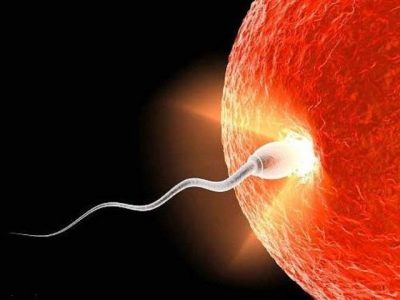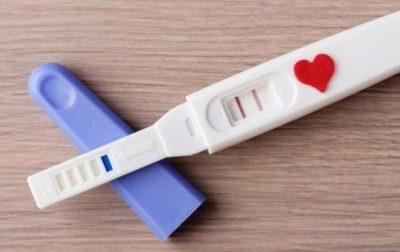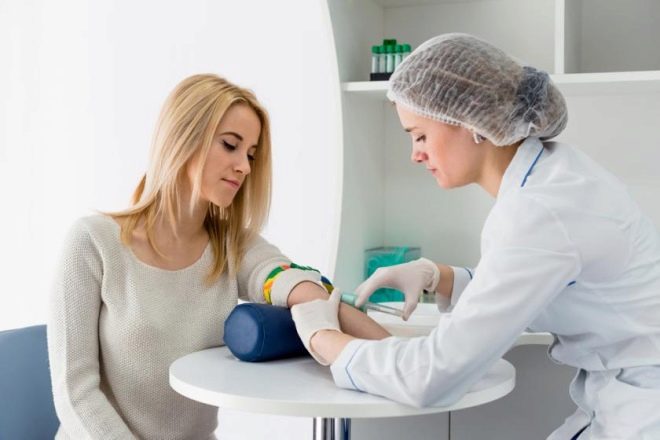What week can you find out about pregnancy?
The onset of pregnancy is an exciting moment for every woman. We will tell you more about the week on which the expectant mother can learn that she is already expecting a baby.
How to determine the accomplished successful conception?
You can determine pregnancy in different ways. Moreover, both modern instrumental examinations and laboratory tests come to the aid of modern women. Our great-grandmothers had no such definitions. They determined the appearance of a “new resident” in their stomach, most often based on clinical signs. This knowledge has been passed down from generation to generation and is being used even now.
The question “What time am I in?” Many girls ask themselves with a positive pregnancy test result. With the help of modern methods you can also define this.
Many women, especially those who can not wait to become mothers, use several methods to determine pregnancy. This helps them make sure that they are really waiting for the baby.
According to laboratory tests
The most common method for determining the conception occurred is the use of special test systems. Modern manufacturers of such laboratory systems offer many such products. Obstetricians-gynecologists note that This method is quite reliable.. However, one should not rush to conduct it, because at too early a time it can show a false negative result.
In order to understand how the definition of pregnancy occurs through the application of the test, one should touch upon the main biological aspects. Conception of the baby is a real sacrament. In order for it to happen, two germ cells are needed. In this case, one of them must be male (sperm), and the other - female (egg). If cell fusion occurs, then conception becomes possible. However, this is not yet a real pregnancy.
A female germ cell fertilized by a sperm cell is not always successfully attached to the uterine endometrium. In this case, the further development of the embryo will not work. If everything develops properly, then the fertilized egg is attached to the wall of the uterus, which means that the pregnancy continues to develop.
The "job" of tests that determine pregnancy is the determination of chorionic gonadotropin in the urine. The level of this hormonal substance begins to increase not in the first seconds after conception, but somewhat later. Reproductive experts note that The concentration of hCG is statistically significantly increased, as a rule, by 6–7 days from the moment of the merger of the germ cells, that is, approximately a week after intercourse.
In test systems used to determine pregnancy, special substances are used that have different sensitivity to human chorionic gonadotropin. If the level of this hormone in the blood and urine of a woman is elevated, then a laboratory test will definitely show this. It is in this case that the “two” stripes appear on the test. In some tests, the word "pregnant" appears instead of such stripes, which means "pregnant."
Test systems for determining pregnancy 1 generation based on the detection of hCG levels in the urine. In order to learn about the “interesting position”, such The test should be placed on collected urine for 10-15 seconds. It is recommended to conduct such an examination in the morning.. At this time, the level of human chorionic gonadotropin is higher in the urine. Morning research is necessary if pregnancy is determined in the earliest terms.
To determine the successful conception You can apply and laboratory tests 2 generations. They are specific test cassettes.. They are made of plastic. At the same time, such laboratory systems have a small window in which stripes appear after the end of the test.
Many women prefer to use tests of the 3rd generation, as they allow us not to pre-collect urine.. Such systems are also called inkjet, because you can conduct a study right at the time of urination.
Many women are in such a hurry to determine pregnancy that they begin to resort to the use of such tests on the first day after the alleged conception. However, at this time, the level of human chorionic gonadotropin is practically not increased, and therefore, it is simply impossible to determine the success of conception. Obstetricians and gynecologists advise in this case not to rush, but wait a few days until the menstruation is delayed.
According to clinical signs
If a woman does not plan a child, then she does not expect pregnancy. But this does not exclude the possibility that she cannot become pregnant.
It is possible to suspect the presence of pregnancy not only with the help of screening tests purchased at the pharmacy. Many years before their appearance, women determined possible pregnancies for specific symptoms. It is worth noting that if even a few of the clinical signs are found, this does not yet indicate a completed conception. These clinical manifestations are so subjective that doctors do not recommend to interpret their position on them.
Suspected pregnancy without a doctor can be a detailed assessment of their health. So, Possible signs of a successful accomplished conception include:
- tenderness and swelling of the mammary glands;
- a change in appetite (both a rise and a sudden aversion to food);
- fast fatiguability;
- drowsiness;
- change of mood (spontaneous tearfulness, irritability, aggression);
- lower abdominal pain (often pulling or stinging), not associated with physical exertion;
- frequent urging to the toilet (especially at night).
These clinical signs may be a manifestation of premenstrual syndrome. For example, pain in the lower abdomen, a change in mood and frequent urge to urinate appear in many women who do not tolerate PMS. That is why such symptoms often do not cause any concern to the woman.
Obstetricians and gynecologists advise their patients never to fully rely on these signs.. They can only be a "hint" of the body that there are some changes in it.
If, against the background of these symptoms, a woman has a delayed menstruation, then she should think about conducting a urine test to determine a successful conception.
Exact methods of determination
All previous methods are more approximate. They only help to suspect pregnancy. However, only a doctor can determine the characteristic changes after the conception took place. He conducts an examination of the genitals, and also directs him to undergo an ultrasound examination.
Gynecological examination
The gynecologist "sees" the pregnancy during the examination. It assesses the state of the genital organs, in particular, determines the size of the uterus. During all pregnancy the uterus increases. This is due to the fact that the baby grows and develops in it.
If the gynecologist after the inspection determined the presence of signs of pregnancy, he will recommend to undergo additional research. This is necessary in order to confirm the accomplished conception, as well as to establish the estimated time.
Determination of human chorionic gonadotropin
It so happens that tests for determination of hCG in the urine showed a negative result, but the pregnancy has already come. Obstetricians and gynecologists note that this situation does occur. In order to dispel your own doubts and accurately determine the level of hCG, you must pass a blood test. This study is more informative than the detection of chorionic gonadotropin in the urine.
It is recommended to donate blood for the determination of this substance in the morning.. Do not eat before visiting the lab. Also, the day before the study is recommended to limit exercise.
Ultrasound
Through ultrasound examination of the pelvic organs, one can not only see ovulation, confirm the fact of successful conception, but also find out what week of pregnancy is going on. It is very important that the examination was conducted by an experienced specialist. Often there are reviews of women who conducted the survey too early and faced false-negative results.
Modern ultrasound devices help to identify and even the smallest formations, including fetal elements, at the earliest stages of intrauterine development. Thus, even a gestational egg having a size of about 0.5 cm can be detected by ultrasound.
In this case, the specialist must determine the size of the uterus, and can also assess the presence of comorbidities.
In more detail about the first signs of pregnancy will tell the following video.























